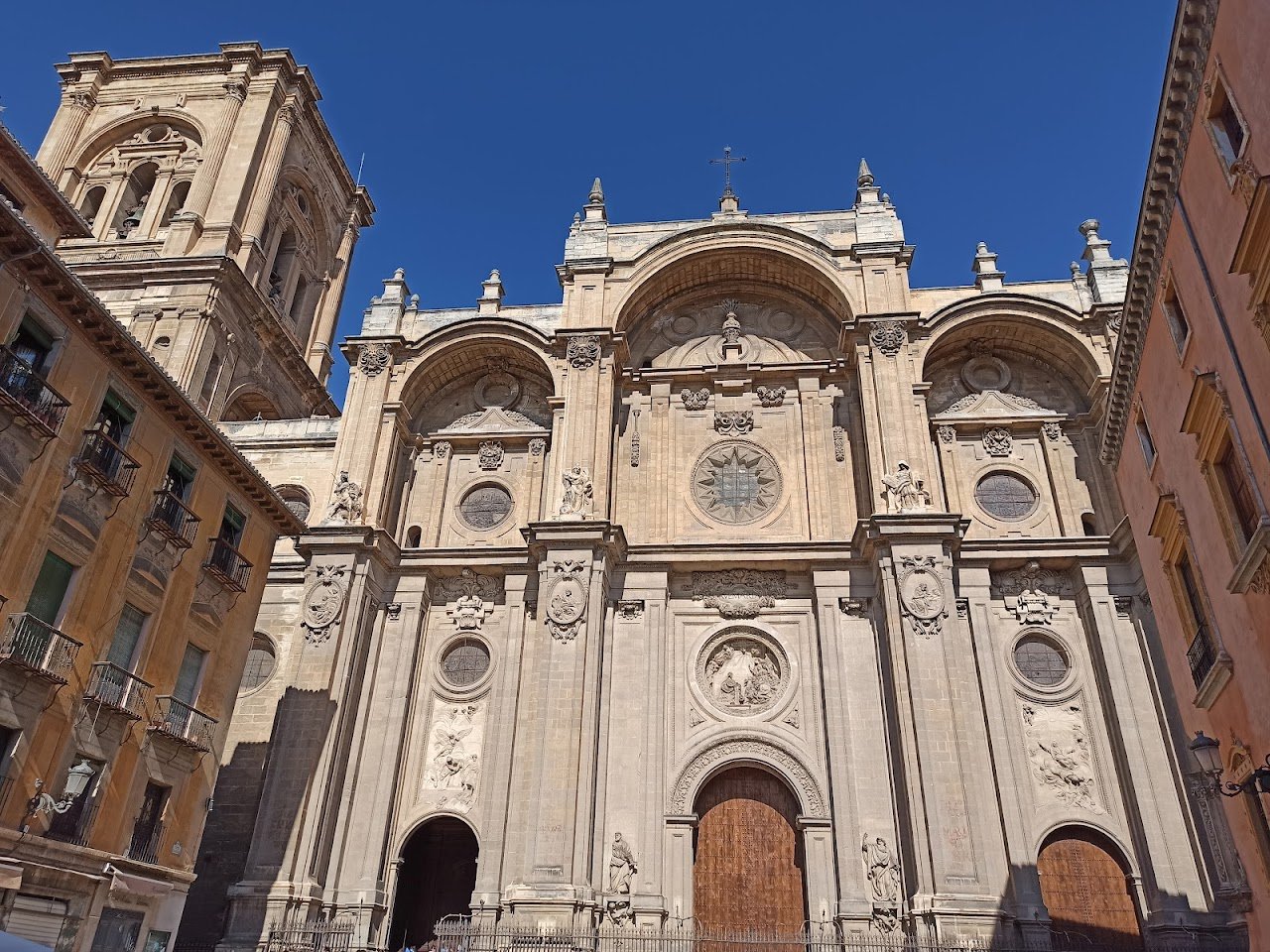Catedral de Granada





Ask ThatchGPT
Suggest a local expert to plan my trip
Suggest an unique itinerary for my Granada trip
What foods do Granada locals eat
What are some true hidden gems in Granada
Help me brainstorm trip ideas for Granada
Help me plan a family-friendly trip to Granada
What people say
Pedro Pereira
Available for hire
"After the conquest of Granada by the Catholic Monarchs in 1492, the city began to acquire a more Christian appearance due to the large buildings designed by monarchs. The most ambitious project was a large Gothic cathedral with a royal chapel to house the remains of Queen Isabella and King Ferdinand (the Catholic Monarchs).
Although its construction was scheduled for 1506, the sudden death of Queen Isabella two years earlier led to the construction of the Royal Chapel to serve as her tomb. For this reason, work on the Cathedral of Granada did not begin until 1523.
The foundations of the chapel were laid in the former main mosque of Granada. After the death of its main architect, Diego de Siloé took over the work and changed its entire previous design to build a majestic Renaissance cathedral.
Siloé, who was also in charge of building the Monastery of San Jerónimo, designed a large temple with five naves and two 80-meter towers. In the end, only one of them was built, measuring 50 meters. The Granada Cathedral was completed in 1704.
One of the most impressive parts of the temple is its façade, designed by Alonso Cano in the mid-17th century. It is made up of a large arch with three other interior arches and high-relief images of Our Lady and other religious figures.
Visiting the Granada Cathedral is to enjoy art in all its forms. The arches of the ceiling, the altarpieces, the columns that separate the naves, the sculptures in the chapel, the stained glass windows... It is impressive to walk through the interior of the Granada Cathedral, paying attention to every detail. It is worth mentioning that the remains of Alonso Cano and Mariana Pineda (a Spanish liberal heroine of Granada origin) are located in the Granada Cathedral.
One of the great attractions of the Granada Cathedral are its fifteen chapels. Many of them house authentic artistic treasures, such as paintings and sculptures by local artists. The main chapel stands out, which was designed to be the pantheon of the Habsburg dynasty and houses paintings by Alonso Cano."
Kirstin Traynor
"Catedral de Granada is over 500 years old and is the second largest religious site in Granada after the Alhambra. It's ornately decorated in a Spanish renaissance style.
Entrance is 5 euros and includes an audio guide - the audio guide wasn't our favourite but it depends on your interests!
Entrance to the Royal Chapel is ticketed separately so bear that in mind if you want to visit both."
Read more in:
Laura Dolci
Available for hire
"The Catedral de Granada is an icon of the city, along with the beautiful and vibrant plaza that sits in front of it. This architectural work of art dates back to the 16th century and showcases gothic architecture. "
Read more in:
Mentioned in these guides
About Catedral de Granada
Get the inside scoop on Catedral de Granada from local experts, travel creators, and tastemakers. Browse genuine trip notes, Catedral de Granada reviews, photos, travel guides, and itineraries from real travelers and plan your trip with confidence.
Save this spot for later or start mapping out a new trip today
Try our AI Travel Assistant and get instant answers to any questions about your trip.
Ask ThatchGPT


